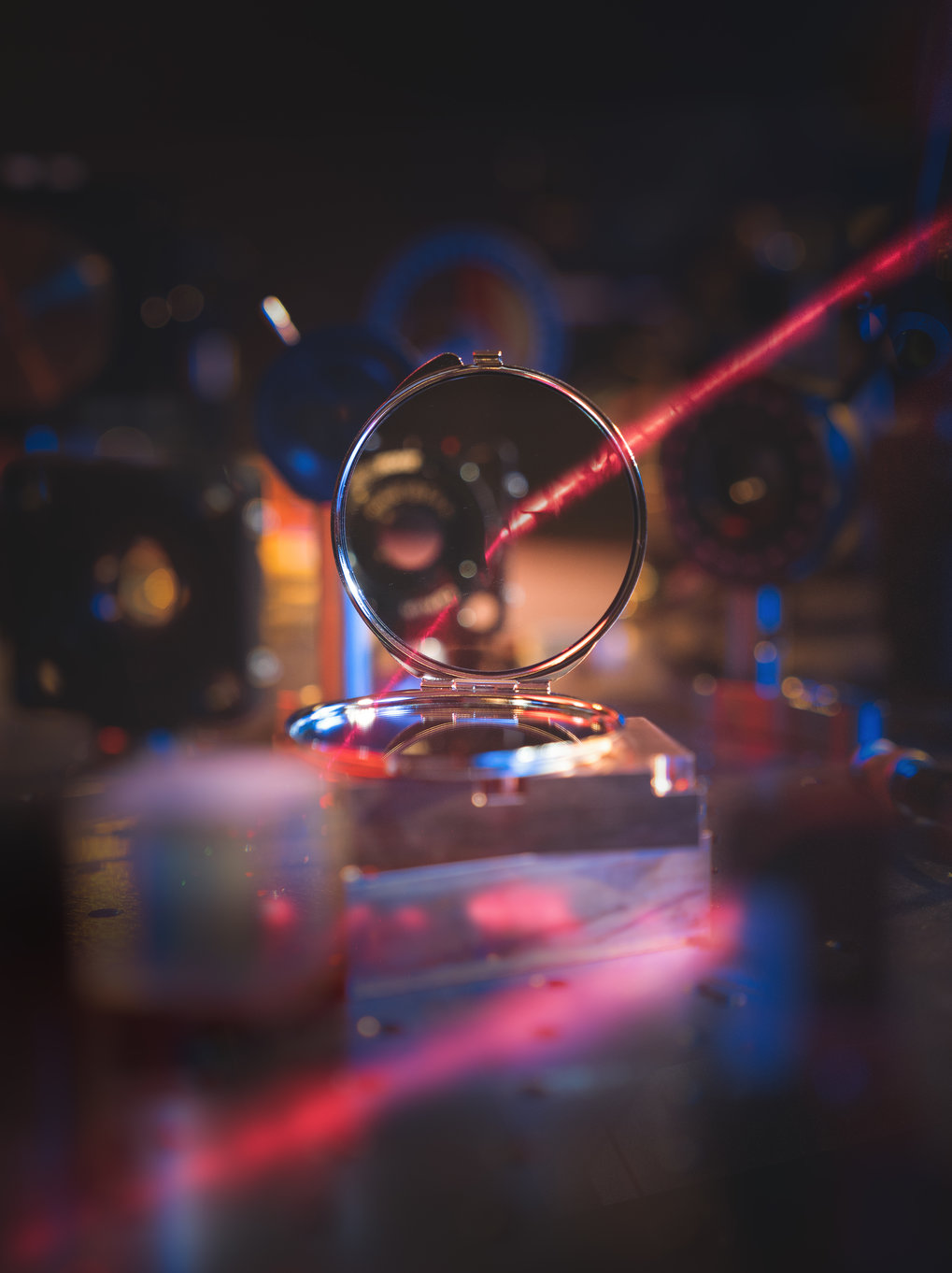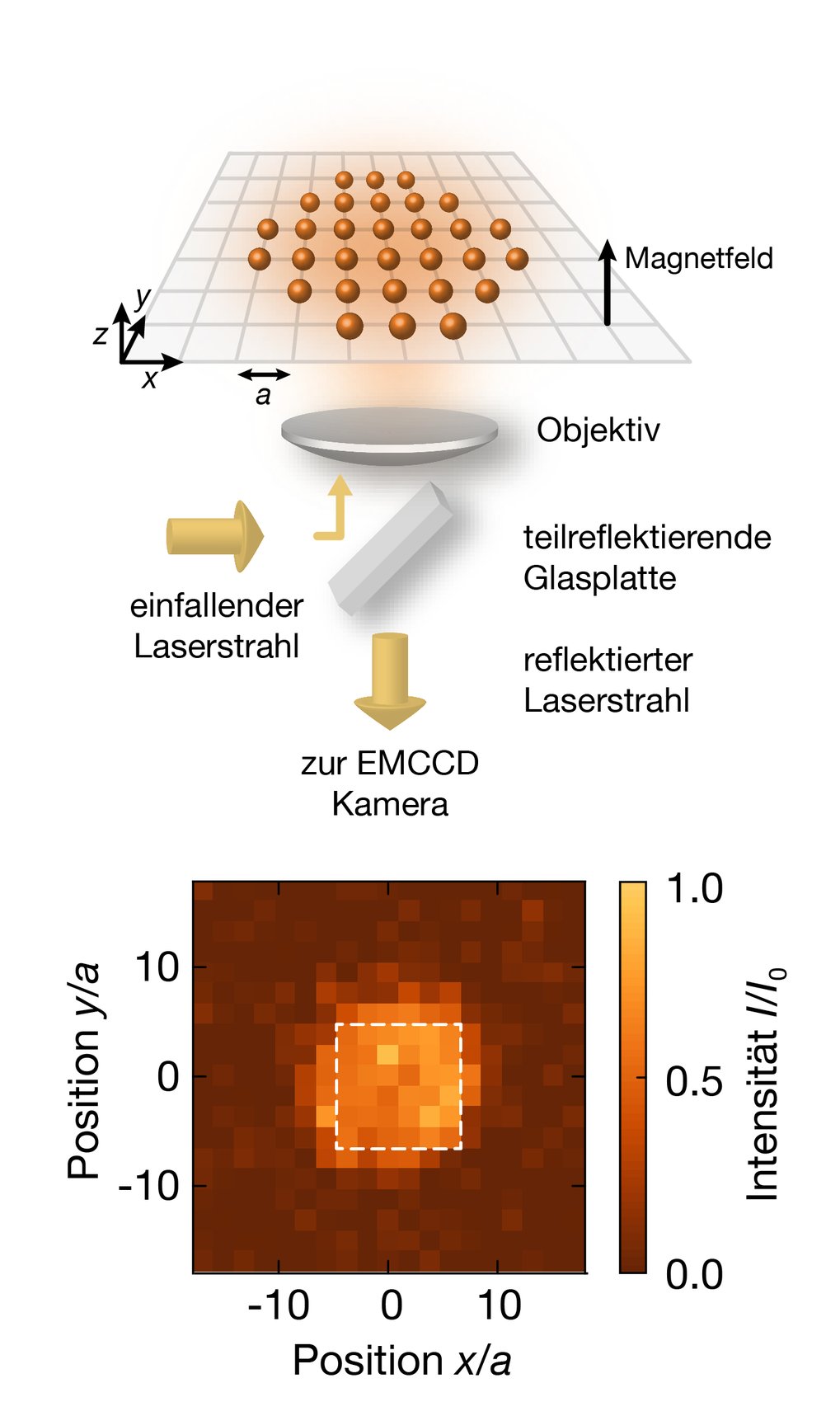As few as 100 atoms can reflect light when they act as a collective quantum system
The lightest mirror in the world sheds new light on quantum phenomena. Physicists at the Max Planck Institute of Quantum Optics constructed the mirror by arranging only 200 atoms in a two-dimensional optical lattice consisting of interfering laser beams. The quantum mirror is the first example of a system in which an ordered ensemble of atoms interact as a collective with incident light. This new form of interaction between light and matter opens up a new field in basic research as well as new applications in quantum information processing.

Mirrors are usually made of polished metal surfaces or specially coated glass so that they can reflect light as well as possible. Physicists from the Max Planck Institute have now shown for the first time that even a single layer of around 200 atoms can reflect light remarkably well. Because the atoms are arranged at a much greater distance from each other than they are in a metal surface, they have a very low density. The Garching-based researchers have thus essentially constructed the lightest mirror in the world. With a diameter of about seven micrometres and a thickness of a mere ten nanometres – which corresponds to the range of motion of the atoms in the optical lattice – the mirror itself is much too small to be seen with the naked eye. Its reflection, on the other hand, is visible to the naked eye because the atomic ensemble reflects light particularly effectively.
New perspectives for basic research and quantum technology
Even though the actual mirror is extremely small, the instruments used to create the mirror fill an entire laboratory – as is the case for most quantum optical experiments. Over one thousand individual optical components, which together weigh around two tonnes, are needed to capture the atoms of the mirror in an optical lattice of crossed laser beams, generate the flashes of light to be reflected, and analyse the reflected light. The new material will therefore not replace conventional mirrors any time soon. But quantum physicists will be able to conduct many more experiments with it.
“The results are quite exciting for us”, says Jun Rui, a scientist at the Max Planck Institute of Quantum Optics and first author of the paper. “This is because photons that strike our mirror create correlations between atoms. This mechanism has often been neglected in quantum optics”. Only through this interplay of atoms does the ensemble act on the incident light as a collective and not as a collection of individual particles. The collective behaviour occurs when the distances between the atoms are smaller than the wavelength of the light that the mirror should reflect. Metaphorically speaking, the incident light does not see individual atoms but rather a single reflective surface. “This is the first time we have observed this collective behaviour in atoms held in an optical lattice”, says David Wei, a doctoral researcher at the Max Planck Institute of Quantum Optics who was also involved in the study. Such arrangements were therefore suitable for investigating new quantum optical phenomena.
Useful properties for the transmission of quantum information

The collective interaction between the atomic ensemble and light opens up many new possibilities for basic research. The Max Planck physicists also have ideas about how their quantum mirror could be used for the processing – and especially the transmission – of quantum information. It has been suggested that the mirror be equipped with a special switch.
The mirror can theoretically be switched back and forth between two states by energetically exciting an atom in the ensemble. In one of these states, it reflects light; in the other, it becomes translucent.
However, the mirror of the Garching-based physicists cannot yet be switched in such a way that it clearly does or does not reflect light. The researchers are therefore working on using sophisticated laser excitation to bring it into a superposition of the two states. In such a superposition state, it reflects light only with a certain probability. It is precisely such states that make the processing of quantum information more efficient than classical information processing. This is because they combine two or more opposing properties.
One possibility for loading light with quantum information
When the researchers have placed the excitable atom in a quantum superposition state, the random state of this atom determines whether or not the mirror reflects. The undecided state of the atom is also reflected in the mirror and thus in the light when it interacts with the quantum mirror. Physicists say that atom, mirror, and light are entangled.
“Such a quantum-switchable mirror offers interesting new possibilities for the transmission of quantum information – like the kind a quantum computer would output”, says Wei. Whether in quantum technology or in basic research, physicists now hope to shed light on the prospects opened up by the quantum mirror.
KJ/PH





